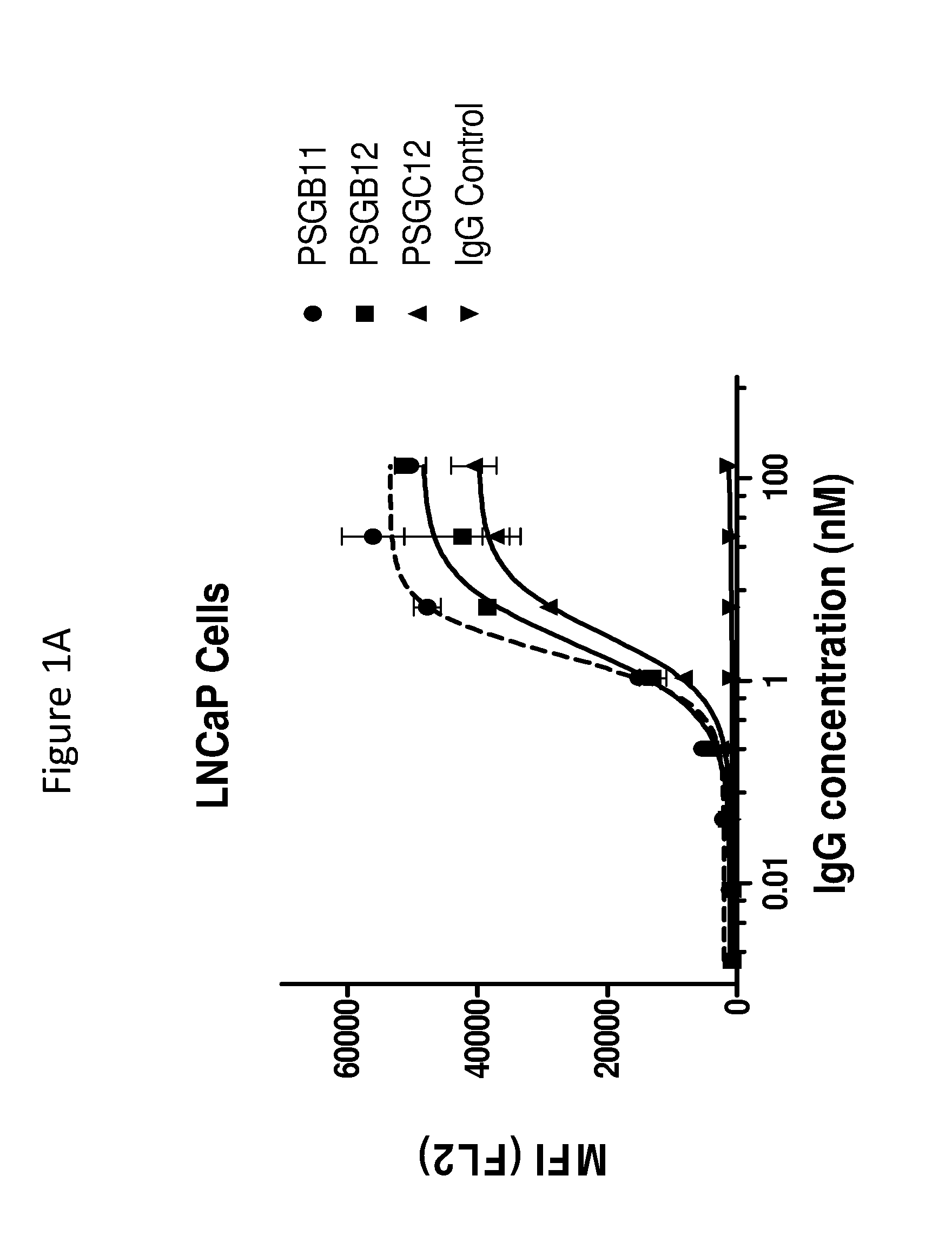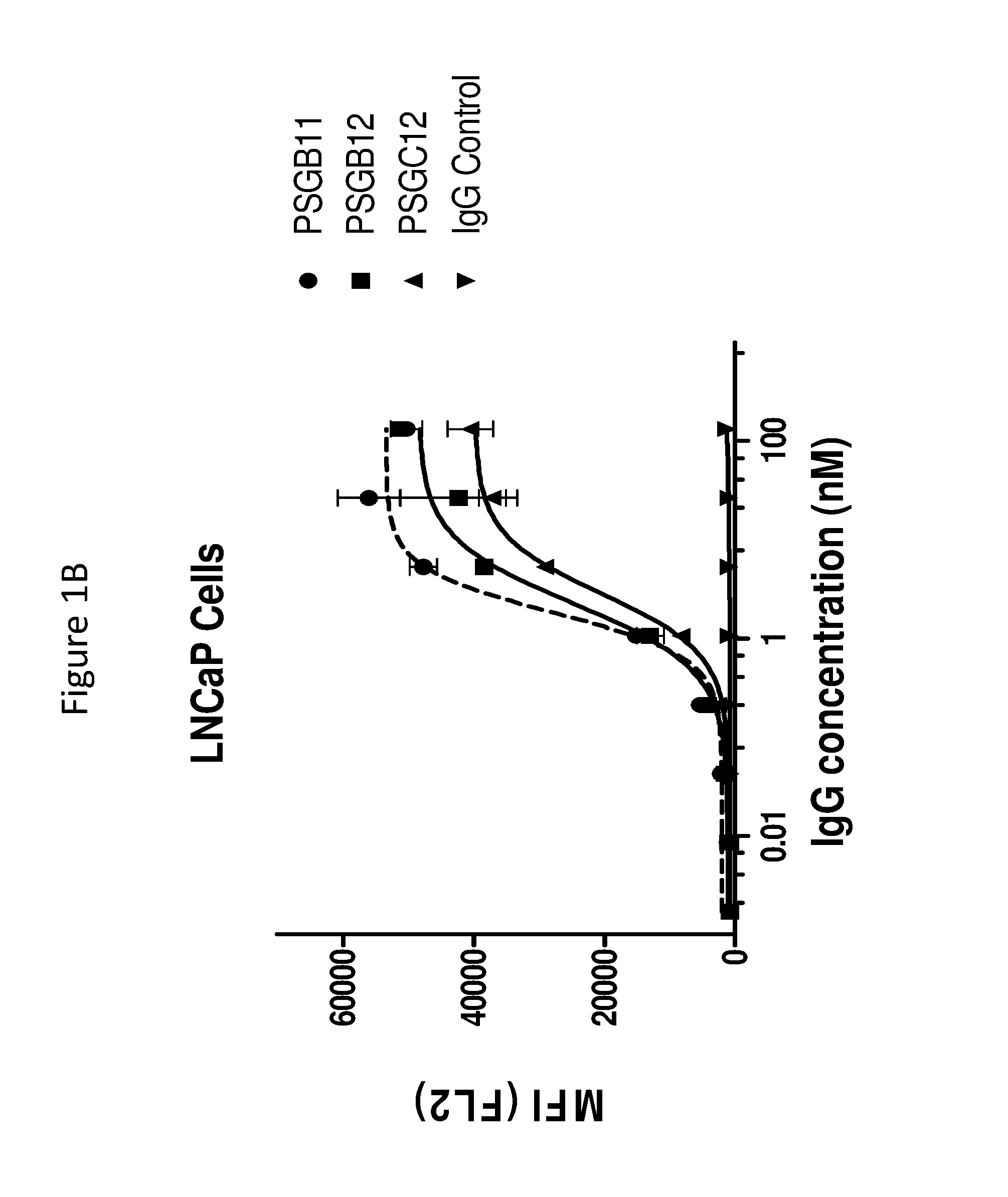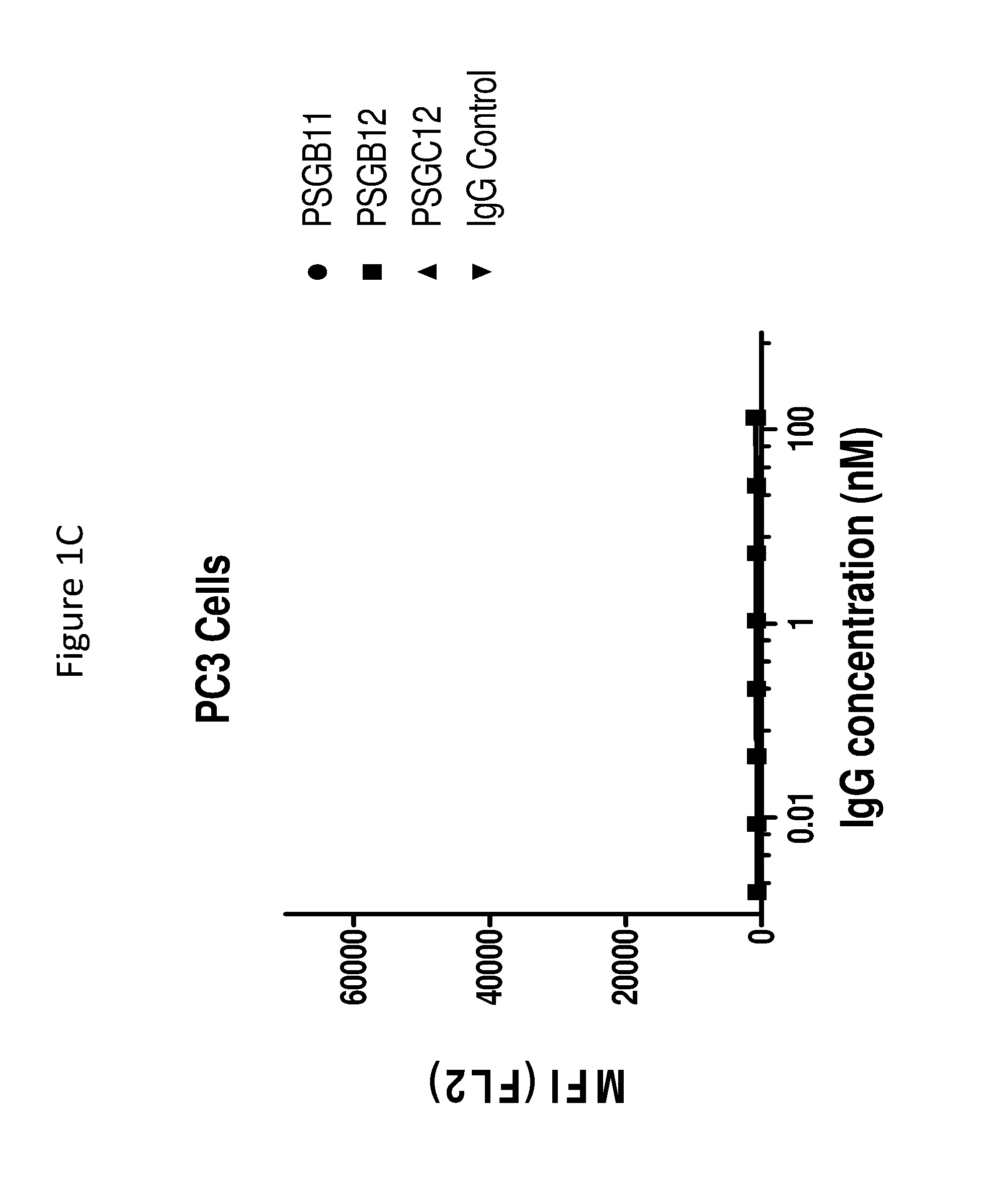Antibody therapeutics that bind psma
a technology of anti-prostate specific membrane and anti-antibody, which is applied in the direction of anti-body medical ingredients, drug compositions, peptides, etc., can solve the problems of cardiovascular toxicity, ineffective cytotoxic chemotherapy treatment of prostate cancer, and a major cause of suffering and increased health care expenditures
- Summary
- Abstract
- Description
- Claims
- Application Information
AI Technical Summary
Benefits of technology
Problems solved by technology
Method used
Image
Examples
example 1
[0172]Human anti-PSMA antibodies were identified, and the amino acid sequences of the light chain and heavy chain variable regions are described in Table 3 below.
[0173]This example illustrates the binding of anti-PSMA antibodies to endogenous human PSMA expressed on LNCaP human prostate cancer cells, as assayed by flow cytometry. EC50 values for antibodies were determined as follows.
[0174]PSMA expressing LNCaP cells were harvested with enzyme-free Cell Dissociation Buffer (GIBCO) and transferred to V-Bottom 96 well-plates (50,000 cells / well). Cells were incubated on ice for 45 min with serial dilutions of anti-PSMA antibodies PSGB11, PSGB12, PSGC12, PSGD4, PSGD6 and PSA11 in FACS buffer (PBS+ 2% FBS)+NaN3. The control antibody (cIg) was a negative control, and was an isotype matched, nonspecific (i.e., does not bind to PSMA and also did not bind the cells) antibody. After 1 wash in FACS buffer, a 1:1000 dilution of Phycoerythrin conjugated anti-Human IgG (γ-chain specific) was added...
example 2
[0179]This example illustrates in vitro data showing the assessment of anti-PSMA antibodies in a cytotoxicity assay using secondary antibody-drug conjugate technique (“Secondary Antibody-Drug Conjugates as Tools for ADC Discovery”. Helen Mao, Poster, IBC 24th Annual, 2013). This example demonstrates the potential of anti-PSMA antibodies to be used as antibody drug conjugates.
[0180]PSMA-expressing prostate cancer cells (LNCaP, ATCC CRL-1740™) were harvested with enzyme-free Cell Dissociation Buffer (GIBCO), seeded into white 96-Well Clear Bottom plates (2,000 cells / well in 90 μl) and allowed to adhere overnight at 37° C. Anti-PSMA antibodies PSGF9, PSGC9, PSGD6, PSGD3, PSGE10, PSGH3, PSGB11, PSGD4, PSGB12 and PSA11 were used in the experiment. Antibodies were pre-complexed with Protein G(PG)-MMAF (Monomethyl auristatin F, Concortis Biosystems) in cell culture media, at a 1:4 molar ratio. The control antibody (cIg) was an isotype matched, nonspecific (i.e., does not bind to PSMA) anti...
example 3
[0184]In addition to the ability of the anti-PSMA antibodies described herein to bind to PSMA and also to induce cell death when conjugated to a toxin, the affinity values for antibodies PSA11 and PSGB11 were determined on Octet. As described in FIG. 3, anti-PSMA antibody PSA11 had an KD of about 6.7×10−10 M, and antibody PSA11 (described in FIG. 4) had a KD of about 6.8×10−10 M.
[0185]Specifically, an amine Reactive Second-Generation (AR2G) sensor was coated with antibody (15 ug / ml in acetic buffer, pH5.0) using Sulfo-N-hydroxysuccinimide / N-Ethyl-N′-(3-dimethylaminopropyl)carbodiimide hydrochloride (Sulfo-NHS / EDC) coupling methodology. The sensors were quenched with 1M pH 8.5 ethanolamine Data was collected by moving sensors to serially diluted recombinant human PSMA / His (in PBS buffer) wells, then the data was dissociated by transferring the sensors to PBS wells. A 1:1 binding model was used to fit the data. Results from the assay are provided in FIGS. 3 and 4.
TABLE 3Amino Acid Hea...
PUM
 Login to View More
Login to View More Abstract
Description
Claims
Application Information
 Login to View More
Login to View More - R&D
- Intellectual Property
- Life Sciences
- Materials
- Tech Scout
- Unparalleled Data Quality
- Higher Quality Content
- 60% Fewer Hallucinations
Browse by: Latest US Patents, China's latest patents, Technical Efficacy Thesaurus, Application Domain, Technology Topic, Popular Technical Reports.
© 2025 PatSnap. All rights reserved.Legal|Privacy policy|Modern Slavery Act Transparency Statement|Sitemap|About US| Contact US: help@patsnap.com



